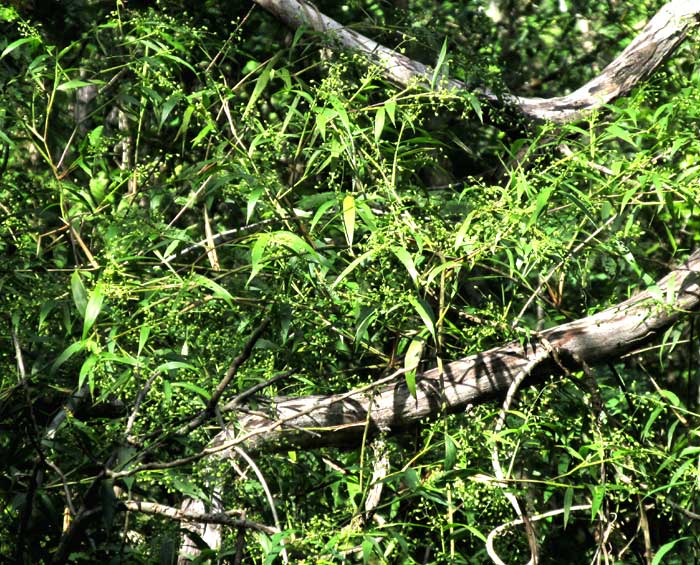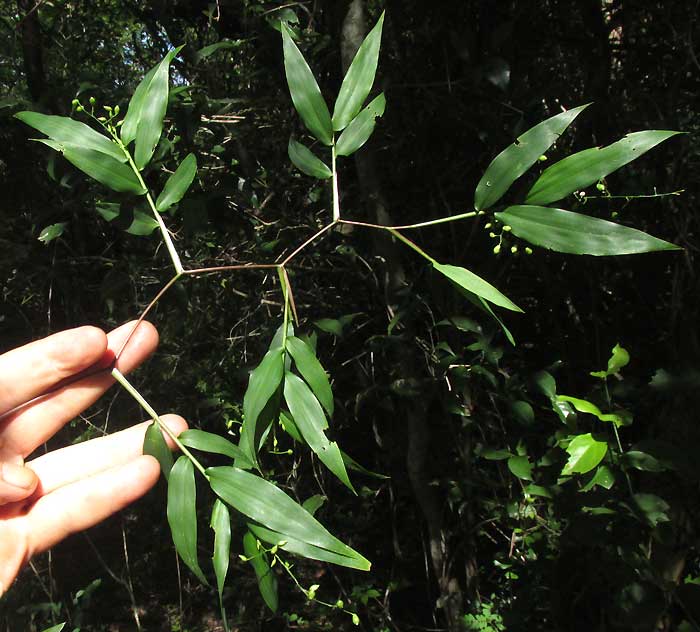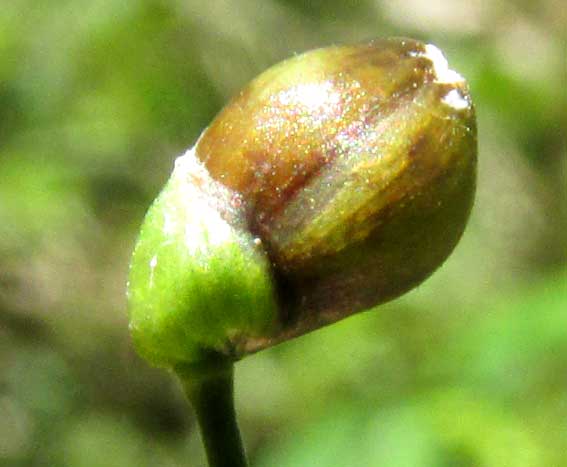Excerpts from Jim Conrad's
Naturalist Newsletter
Entry issued on November 15, 2019, from the forest just west of Tepakán; elev. ~9m (~30 ft), N21.053°, W89.052°; north-central Yucatán state, MÉXICO
LASIACIS DIVARICATA
Below, you can see one of the most distinctive, commonly occurring members of the rancho's regrowing forest.

It's a grass, but, like bamboo, it arises from woody stems, or culms. Unlike bamboo, its flowering and fruiting heads are egg-shaped, or ovoid. Its stems branch freely and, as seen above, clamber over bushes and into trees, 4m or higher (13ft).
It's LASIACIS DIVARICATA, for which I can find no English name, so I call it Lasiacis. Five Lasiacis species are listed for the Yucatan Peninsula, and in our area this one is by far the most common of all. It's distinguished from the others by its general hairlessness (except along sheath margins) and its zigzagging terminal flowering branches, shown below:

Lasiacis' spikelets curiously are attached obliquely to their pedicels, as seen below:

In our forest this is one of the most characteristic and eye-catching species. It occurs from southern Florida, Mexico and the Caribbean south through nearly all of lowland tropical America.
Issued on December 26, 2019, from the forest just west of Tepakán; elev. ~9m (~30 ft), N21.053°, W89.052°; north-central Yucatán state, MÉXICO
LASIACIS DIVARICATA MATURE SPIKELETS
Nowadays the flowers are mostly matured into the blackish spikelets shown below:
